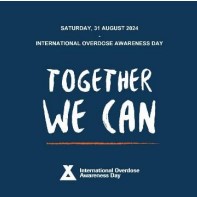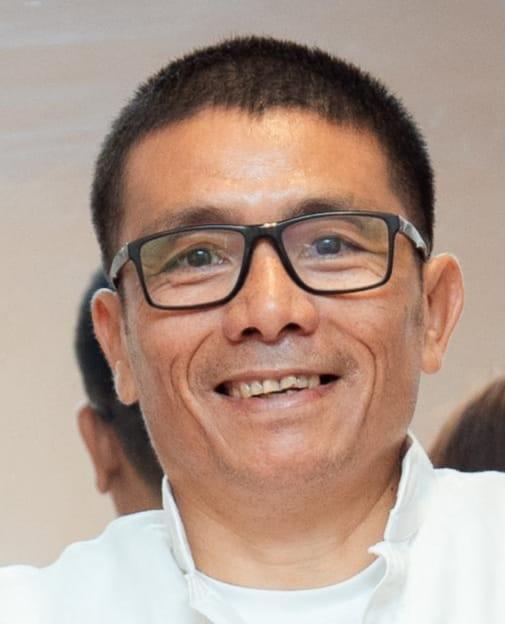 Initiated in 2001 by Sally J Finn at The Salvation Army at St. Kilda in Melbourne, International Overdose Awareness Day (IOAD) has grown into a global event observed annually on August 31. This day is dedicated to raising awareness about the risks of overdose, reducing the stigma surrounding drugrelated deaths, and honouring those who have lost their lives.
Initiated in 2001 by Sally J Finn at The Salvation Army at St. Kilda in Melbourne, International Overdose Awareness Day (IOAD) has grown into a global event observed annually on August 31. This day is dedicated to raising awareness about the risks of overdose, reducing the stigma surrounding drugrelated deaths, and honouring those who have lost their lives.
The theme for 2024, “Together We Can,” highlights the power of community when united against overdose. IOAD serves multiple purposes, including providing a safe space for individuals to mourn without shame, sharing vital information on overdose prevention, and promoting evidence-based policies to reduce drug-related harm.
IOAD is the world’s largest campaign to end overdose, symbolized by the silver badge, which represents awareness and the devastating effects of overdose. Wearing silver, along with purple wristbands and lanyards, shows solidarity with those affected by this issue.
In Manipur, a state in northeastern India, IOAD holds particular significance due to the region’s longstanding struggle with drug addiction and overdose. Manipur has long been vulnerable to drug trafficking and use due to its proximity to the “Golden Triangle,” and in recent years, this challenge has escalated with the emergence of local production units. In the 1980s and 1990s, the response to drug use was primarily punitive, with severe penalties imposed by law enforcement, anti-drug organizations and non-state actors. Overdose cases were often ignored, leaving individuals to suffer alone unless their families intervened.
During this period, those who experienced overdoses faced severe stigma and discrimination, both from society and within healthcare settings. The lack of access to life-saving medications like Naloxone, coupled with widespread myths about overdose treatment, led to high mortality rates. Human rights were violated outrightly.
However, the turn of the millennium brought a shift in Manipur’s approach to drug use. The formalization of Targeted Interventions (TI) programs under the Manipur State AIDS Control Society (MSACS), supported by the National AIDS Control Organization (NACO), introduced Harm Reduction programs. Community-based organizations and volunteers began intervening in overdose cases, referring individuals to emergency units in hospitals. Despite these efforts, accessing Naloxone remained a challenge, with the drug often sold at inflated prices under the desk. This life saving drug costs only about 80 Rs per ampoule in retail price.
In 2019, the introduction of the “Manipur State Policy on Psychoactive Substances” marked a significant step forward. This policy emphasized the importance of making overdose management available at all strategic centres and authorized outlets, including hospitals. However, practical implementation remains uneven, and challenges persist.
Today, drug use in Manipur affects people of all backgrounds, sexes and ages, and overdose incidents have become increasingly common. Hospitals and public health centres still struggle with the availability of Naloxone, and patients are sometimes forced to buy it at exorbitant prices. Additionally, stigma and discrimination continue to hinder effective treatment.
The global number of people using opioids, responsible for nearly two-thirds of all overdoses, has doubled from 26-36 million in 2010 to 61.3 million in 2020. In the U.S. alone, nearly 108,000 people— an average of 295 per day—died from drug overdoses in 2022, according to the Centers for Disease Control and Prevention (CDC). In India, however, data is sparse, with only limited information available from independent centers, lacking both specificity and comprehensive representation.
International Overdose Awareness Day provides an opportunity to reflect on the progress made and the challenges that remain in Manipur’s battle against drug overdose. The 2024 theme, “Together We Can,” resonates deeply in this context, emphasizing the need for collective action and the strength of community in addressing this issue.
On this day, communities across Manipur should come together to remember those lost to overdose, support grieving families, and renew their commitment to ending overdose-related harm. Wearing silver badges, purple wristbands, and lanyards, people in Manipur should stand in solidarity with those affected by this issue.
As Manipur continues to gripped with the complex challenges of drug use and overdose, IOAD serves as a reminder of the importance of compassion, awareness, and action. Every life matter, and the fight against overdose requires the collective efforts of communities, healthcare providers, and policymakers. By working together, Manipur can build a future where no one has to suffer the loss of a loved one to overdose, and where every individual struggling with addiction is treated with dignity and care.
While various Targeted Interventions (TIs) and Civil Society Organizations (CSOs) are actively responding to overdose incidents, there is still a need to improve and coordinate efforts across the state. The response must be efficient, viable, and operational round the clock. The ongoing efforts are evident, but to prevent further loss of life, we must escalate and enhance these initiatives.
The alarming overdose statistics in Manipur are not just numbers—they represent real people, families, and communities in pain. They are a call to action, a reminder of the power we hold when we come together. “Together We Can” is more than just a theme; it is a promise to work hand in hand— across government agencies, healthcare providers, community organizations, and individuals—to create a safety net strong enough to catch those who are falling.
As we move forward, let us remember that no one is beyond help and that every life is worth saving. Together, we can change the narrative and build a Manipur where overdose is no longer a death sentence but a call to action, support, and life.












